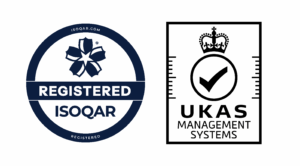Should Christmas be cancelled? Retail revolution or CX nightmare?
It would be wrong to think that it’s just the serial bargain hunters, ‘retail therapy’ enthusiasts, or Wizzard fans who “wish it could be Christmas every day”. With UK consumers set to spend more this Christmas than any other country within the EU, the competition among retailers, has us listening to songs that everyone knows, but that should never be heard repeatedly in public places, as early as October!
But it’s a long drag from October to Christmas Day so it’s difficult to maintain a consumer buying fever in the twelve days weeks of Christmas. Enter Black Friday and Cyber Monday. Although many headlines state that Black Friday and Cyber Monday have become unpopular, spending figures during this period, proves it a myth. Bah humbugs will have to accept that the concept of the season of discounted shopping isn’t going away soon.
Apart from an increase in consumer spending, not a lot is reported on the effect this trend has on both customer experience and ultimately the retail industry’s bottom line. Naturally, gratuitous spending delights retailers, however as margins become wafer thin, some retailers won’t survive, especially when conversion rates slow down, with customers only browsing particularly online, in readiness for the Black Friday bonanza.
Joanna Causon, Chief Executive at the UK Institute for Customer Service says, “Retailers are grappling with uncertain consumer demand and a fundamental shift in customer behaviour which has forced a rethink in the economics of serving large numbers of customers across multiple channels.”
Naughty or nice
Britain is now the biggest online shopping nation in the developed world, with almost two thirds of adults using the internet to buy goods or services, according to IMRG, a body which represents the UK’s online retailers. The first half of 2018 alone, saw online retail accounting for more than 20% of retail sales, growing at ten times the rate of store sales.
But with everyone flocking to purchase online, not all retailers are able to cope with the number of visitors to their websites, which will leave some customers – looking for an online bargain – frustrated. Customers are still expecting instant, 24/7 customer service across multiple channels, and pressures on contact centres will increase in the lead up to Christmas. While online sales figures might seem like a dream, LCP logistics consultancy reports that e-tailers are expected to be lumbered with £2.5bn worth of unwanted presents being returned after the Christmas period, which could be a customer support nightmare!
Making a list
Happy customers put businesses on the ‘nice’ list, equal repeat custom, and have them sharing their experience with friends, colleagues and family. Emulating great customer experience is however a long road for those who have neglected their customers for years.
Although the numbers of consumer engagement with digital technology are growing daily – and some retailers are adopting a multichannel model – overall customer satisfaction in the UK is 0.3 points lower than July 2017. The UKCSI says, “Although this downward movement is relatively slight, it is the first time since January 2015 that two consecutive UKCSI surveys show a decline in overall satisfaction. We are seeing a trend of divergence between the highest performing organisations and the rest, coupled with a growing body of evidence indicating that achieving consistently superior levels of customer satisfaction is a crucial enabler of sustainable financial results.” This should be of concern not just retailers but all businesses, no matter their industry.
Checking it twice
As the online world of retail expands into our physical shopping habits – driven by our desire to access information on products and services and to compare prices – retailers will need to adapt to keep customers engaged with instant access to the information through search, FAQs and across social platforms too.
Whether a business operates online, offline, or both, the most important thing should be the customer, and the experience delivered to them to ensure the financial results associated with customer satisfaction.
Even brands that are boycotting the Christmas shopping phenomenon, promising to deliver year-round value to customers, must still adhere to the oldest brand values: Good, informative customer service and a multi-channel strategy that supports this. If not, ending up on the ‘naughty’ list will surely impact the future of the business.
Businesses developing their customer service strategy might want to visit the resources section on our website where we can offer insight into:
1. Increasing customer satisfaction & loyalty levels
2. Reducing customer contact – improving first contact resolution
3. Offering a consistent multi-channel customer service
4. Improving operational and service cost efficiency



